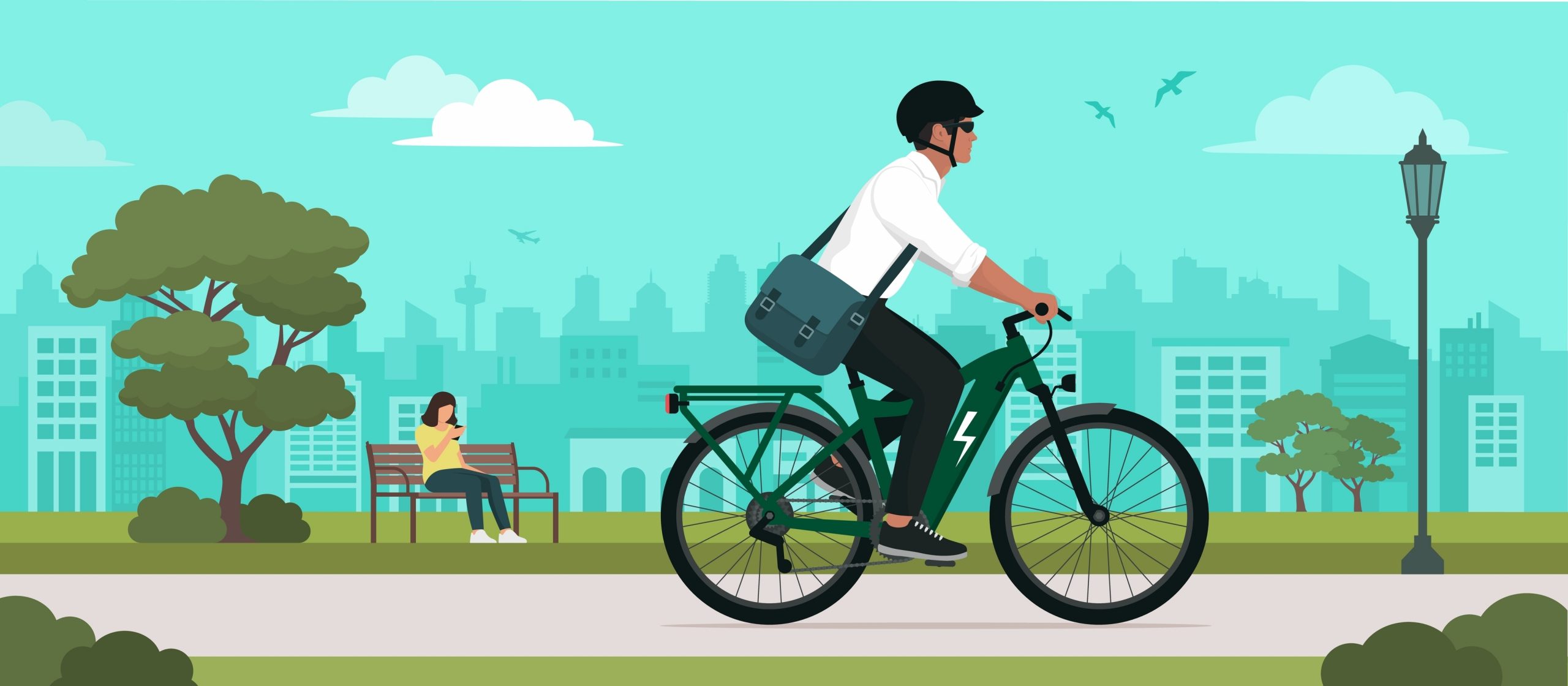Understanding e-bike regulations in California is crucial for ensuring safe and responsible riding. Familiarity with state regulations helps riders avoid legal complications and potential accidents. As a plaintiffs-only law firm specializing in personal injury cases, TORKLAW can play a significant role in representing individuals involved in e-bike accidents and protecting their rights.
Definition of an E-bike in California
In California, e-bikes are classified into three distinct categories: Class 1, Class 2, and Class 3. Each class is subject to specific regulations regarding motor power and maximum speed limits.
Class 1 e-bikes, also known as pedelecs, are designed to provide assistance only when the rider is pedaling. They have a maximum assisted speed of 20 mph. On the other hand, Class 2 e-bikes are equipped with a throttle that can propel the bike without pedaling, but they are also limited to a top assisted speed of 20 mph.
Class 3 e-bikes are more powerful and can reach assisted speeds of up to 28 mph. However, they are not allowed to have throttle assistance, requiring the rider to pedal for the motor to function. Additionally, these bikes must be equipped with a speedometer to display the current speed.
Motor power is another important factor in defining an e-bike in California. To qualify as an electric bicycle, the motor of an e-bike cannot have a power greater than 750 watts (1 horsepower).

Licensing, Insurance, and Registration Requirements for E-bikes
Unlike traditional motor vehicles, e-bikes in California do not require a license, insurance, or registration. However, compliance with the state’s e-bike regulations is still mandatory for all riders. This means that e-bike users must be aware of the rules and restrictions associated with their specific class of e-bike and adhere to them while riding.
Maintaining compliance with e-bike regulations helps ensure the safety of both the rider and others on the road. It also prevents potential legal complications that may arise from non-compliance.
Age Restrictions for E-bike Riders in California
Understanding the age restrictions for e-bike riders in California is essential in promoting safe and responsible use of these vehicles. The minimum age requirement for Class 3 e-bike riders is 16 years old. This restriction is in place due to the increased power and speed capabilities of Class 3 e-bikes
On the other hand, there are no age restrictions for Class 1 and Class 2 e-bikes. However, it is still crucial for parents and guardians to ensure that young riders are educated on proper e-bike safety, operation, and adherence to California’s e-bike regulations.

Helmet Requirements for E-bike Riders in California
Wearing a helmet while riding an e-bike is essential for ensuring the safety of the rider. In California, helmet requirements differ based on the class of the e-bike and the age of the rider. For Class 1 and Class 2 e-bikes, riders under the age of 18 are required to wear a helmet, providing them with added protection.
However, Class 3 e-bike riders are required to wear a helmet regardless of their age. This requirement is due to the higher speeds that Class 3 e-bikes can achieve. Wearing a helmet in this case is crucial for reducing the risk of injury in the event of an accident.
Adhering to helmet requirements not only promotes safety but also demonstrates a commitment to responsible e-bike use. By following these regulations, riders can help foster a safer environment for themselves and others on the road.
Rules for Riding E-bikes on Roads and Trails in California
Riders must adhere to specific rules when using e-bikes on roads and trails in California. The regulations vary depending on the e-bike’s class, which affects where they are allowed to be ridden and the precautions that should be taken.
Class 1 and Class 2 e-bikes are allowed on regular bicycle paths and lanes. This means that riders can use these e-bikes in the same manner as traditional bicycles, sharing the road with other cyclists and adhering to the same traffic rules and regulations.
Class 3 e-bikes are subject to different rules. These e-bikes are allowed on normal bike paths only if permitted by local authorities. This means that riders should check with their local jurisdiction to ensure they are following the appropriate guidelines for riding their Class 3 e-bike on bike paths.
Additionally, Class 3 e-bikes are not allowed on sidewalks, ensuring the safety of pedestrians and reducing the potential for accidents. As a result, riders must be mindful of their e-bike’s classification and adhere to the specific regulations associated with their e-bike to promote a safe and enjoyable riding experience for everyone.

Local Ordinances and Regulations for E-bikes
While California has state-wide e-bike regulations, local ordinances and regulations may also apply. As a responsible e-bike rider, it is essential to check the local guidelines specific to your area to ensure compliance with all applicable laws. Familiarizing yourself with these rules not only keeps you informed but also promotes a safer riding environment for everyone.
Furthermore, localized incentives, such as Los Angeles’s Replace Your Ride initiative, encourage residents to replace gas-guzzling vehicles with e-bikes. These programs make e-bikes more accessible and affordable for California residents, promoting a greener and more sustainable mode of transportation. By understanding and taking advantage of these localized initiatives, riders can make a positive impact on their community and the environment.
Injured in an E-bike Accident?
As a leading personal injury law firm specializing in bicycle accidents, TORKLAW is well-equipped to represent individuals involved in e-bike crashes. Our expertise in handling e-bike cases ensures that the rights of injured riders are protected and that they receive the compensation they deserve. Contact TORKLAW for a free case evaluation and let our experienced team assist you.





